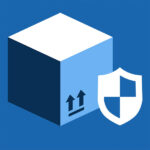Supply Chain Cyber Security
Supply chain efficacy and complexity are increasing hand-in-hand. Even as digital tools improve inventory management and delivery tracking, executives point to concerns around visibility and fluctuating consumer demand. Yet, the adoption of technology-driven solutions comes with another concern: supply chain cyber security. It’s true that cloud-based devices empower inventory oversight and mobile applications make it easier for executives to respond as demand curves change. However, malicious actors are leveraging gaps in digital defenses to compromise key functions and impair supply chain consistency. 45% of organizations worldwide will have experienced attacks on their software supply chains by 2025, Gartner predicts. As a result, organizations need robust cyber supply chain risk management (SCRM) that accounts for both existing applications and emerging IT. These security solutions can help minimize disruption and enhance overall security.

Monitoring Supply Chain Threats
Cyber security in supply chain management is informed by the evolving threat landscape. It’s critical for organizations to both assess and address key threat vectors, including:
- Malware — Attackers leverage common compromise techniques — such as phishing attacks — to gain network access and infect key systems. If employees click on malicious links or provide account details, it’s possible for hackers to infiltrate critical infrastructure and then alter or exfiltrate crucial supply chain data.
- Ransomware — Ransomware remains one of the top supply chain cyber threats. By taking advantage of supply chain cyber security weaknesses, attackers can obfuscate and encrypt key data, then demand payment for its release.
- Software vulnerabilities — Existing software vulnerabilities can increase supply chain cyber risk. In many cases, companies aren’t aware of open-source issues or legacy code concerns, making this an ideal avenue for hackers.
- Counterfeiting — Counterfeit products tied to your supply chain can have devastating long-term effects on reputation and reliability. Here, cyber security supply chain management is critical to catalog current assets and identify doppelgangers as quickly as possible.
- Complexity — The increasingly complex supply chain landscape makes it difficult for teams to achieve both on-demand tracking and inventory transparency. This level of intricacy provides ample opportunity for attackers. Effective supply chain cyber security helps improve visibility and limit total risk.

Linking Best Practices to Essential Outcomes
Before deploying specific solutions to manage supply chain cyber risk, organizations must align best practices and desired outcomes. First is assessment. What security measures are in place? How effective are they at detecting and deflecting current threats, and where is there room for improvement? Robust analysis can help connect defense techniques and specific needs, in turn reducing total cost and complexity. Next, organizations must evaluate relevant industry risks. Here’s why: Every supply chain is unique. While the general purpose is ubiquitous across sectors and organizations, individual business requirements and risks vary significantly. Therefore, it’s critical to identify the top cyber threats to your operations in order to find the best-fit security solutions. Finally, supply chain enterprises must recognize the scope of cyber security in supply chain applications. While digital deployments now empower on-demand connections and real-time inventory tracking, protecting these assets isn’t enough in isolation. In fact, companies must deploy cyber supply chain risk management plans that address critical concerns at each step of the sourcing, procurement, inventory, delivery and completion processes.
“…the PEN test went well, and business was not affected by it, which is very important during our busy season.”
– Logistics and Freight Transportation company

Building Better Supply Chain Cybersecurity
At HALOCK, we’re committed to helping you build better supply chain cybersecurity with services such as:
- Risk Based Threat Assessment: Improve protection against the five MITRE ATT&CK Types. Prioritize security controls to enhance or implement using the best threat data the cybersecurity community offers, leveraging the HALOCK Industry Threat (HIT) Index, a model for estimating the most likely (and least likely) ways your organization will be hit by a cybersecurity or information security attack.
- HALOCK’s Cloud Security Assessment: Gain insight on your risks. The assessment provides a review of Azure, AWS, and Google (GCP) cloud environments to identify risk and recommends how to remediate them.
- Security Staffing — The right IT experts make all the difference. Our team of experienced industry professionals can help bridge key supply chain cyber risk gaps and recommend solutions to improve overall security posture.
- Security Engineering – The goal is reduce total IT risk by implementing security controls and processes that address needs across your network. HALOCK provides comprehensive services such as sensitive data scanning, Threat-Based Security Architecture Review & Analysis that offers insight specific to the supply chain and logistics industry, as well as Security Threat Management. Proactively implementing a comprehensive security strategy can help mitigate system disruption and operational downtime. An ongoing review of your threat landscape is a best practice for your industry through a managed detection and response program (MDR) or Threat Hunting Program. Make sure you have the security controls required by compliance requirements like multi-factor authentication (MFA) or a web application firewall (WAF).
- Supply Chain Risk Assessment – Regulations require your safeguards be reasonable to your organization, customers, and partners. With many frameworks available, how do you establish your acceptable risk? The Duty of Care Risk Assessment (DoCRA) helps you define a reasonable security strategy factoring in compliance and safeguards based on your specific mission, objectives, and social responsibility. With the HALOCK Industry Threat (HIT) Index, understand the supply chain threat landscape to identify potential risks and threats to your network. A thorough analysis can determine where to prioritize your investments for a reasonable and appropriate cybersecurity supply chain risk management program. With the release of the Securities and Exchange Commission (SEC) Cybersecurity rules on disclosure, it’s essential that you regularly review your risk profile.
- Penetration Testing — If you can’t see it, you can’t protect it. Penetration testing from HALOCK helps identify potential weak points across networks and applications — before cyber attackers do the same. Test to see if your controls and team can respond appropriately in the event of a breach with an Assumed Breach or Adversary Simulation penetration test. Consider a Recurring Penetration Testing program to assess your safeguards throughout the year for a proactive security approach. Learn about new vulnerabilities with the HALOCK Exploit Insider – updates on what our pen testers have discovered.
- Incident Response — Agility is the hallmark of successful supply chain organizations. Our incident response solutions help you prepare for potential cyber attacks, quickly identify root causes and reduce the risk of ongoing threats. Regularly update your incident response plan (IRP), as cyber insurance underwriters look for this during the underwriting process. Get a forensic analysis. HALOCK’s incident response management, process, and planning provide comprehensive coverage in the event of a cyber security breach. Explore an ongoing program that gets in front of any potential cyber security threats or attacks. You can be response ready with an Incident Response Readiness as a Service (IRRaaS) program.
- End-to-end Security Management — Supply chain threats are physical, digital and operational. Build effective end-to-end cyber supply chain risk management with our ongoing risk management / security maintenance and Duty of Care Risk Analysis (DoCRA) services.
- Mergers & Acquisition (M&A): As part of the due diligence process of an M&A, organizations must understand the risk and security profile of their partner or target company. You must determine what liabilities or risks can arise under the other company’s cybersecurity program. With HALOCK’s M&A program, we can help you through the entire process from pre-acquisition to post-acquisition to identify risks, remediation steps, and establish reasonable security.
- Third-party risk management (TPRM) and Vendor Risk Management — From software to hardware to infrastructure and network tools, suppliers, vendors and contractors are critical to success. But they also can introduce supply chain cyber risk. A recent Panorays study revealed 41% of organizations are not sure if their suppliers were out of compliance in the past year. It also indicated that half of the respondents cited third party risk as one of the top 5 items in their risk register and expect this risk to increase. A required best practice is to always conduct a supplier risk assessment to keep your vendors on point with your security posture. HALOCK can help build TPRM programs that deliver both performance and protection. It is also a good time to review your existing third party partners, as their risk profile may have changed.
- Privacy Protection — Protecting customer and partner data is critical for supply chain cyber security, HALOCK experts can help you understand key privacy requirements (such as CCPA) and deploy effective security policies at scale.
- Policies & Procedures and Cyber Security Awareness Training — Ensure your teams are well-versed in how to manage company devices, understand potential cyber security threats, and how to communicate risks to the proper parties. Our teams can frame guidelines and protocols specific to your organization.
- PCI Compliance — PCI DSS v4.0 is here. It is essential to review your existing compliance to achieve compliance. Our PCI team can streamline the process by identifying what needs to be updated and how to do so to best manage your risk.
- Cybersecurity Maturity Model Certification (CMMC) Readiness – Prepare for the new CMMC certification requirement to continue working with the Department of Defense (DoD) or to bid on projects with the DoD.
Learn about our comprehensive approach to risk with our Risk Management Program.
“The project scoping team did a great job, and exceeded all expectations. We were very satisfied with the project. Thank you!”
– Global Logistics Provider

Enhancing Security Supply Lines with HALOCK
Expanding supply chains introduce new levels of complexity, while evolving digital services can increase cyber security risk. HALOCK Security Labs helps you find a balance with reasonable and appropriate safeguards, exactly the right amount to ensure due diligence without breaking your budget. Our industry expertise and IT experience empower HALOCK to act as your full-service digital security partner. From creating an inventory of supply chain threats to building out best practices, developing end-to-end defensive plans and deploying essential services, we’re here to help your business forge critical links across supply chain speed, sustainability and security. Let us support your specific needs with a supply chain risk analysis and risk management plan – we can support your management of risks operations.
“The response time was great. HALOCK was able to help put us on the road to recovery as quickly as possible.”
– Electrical Equipment Supplier
